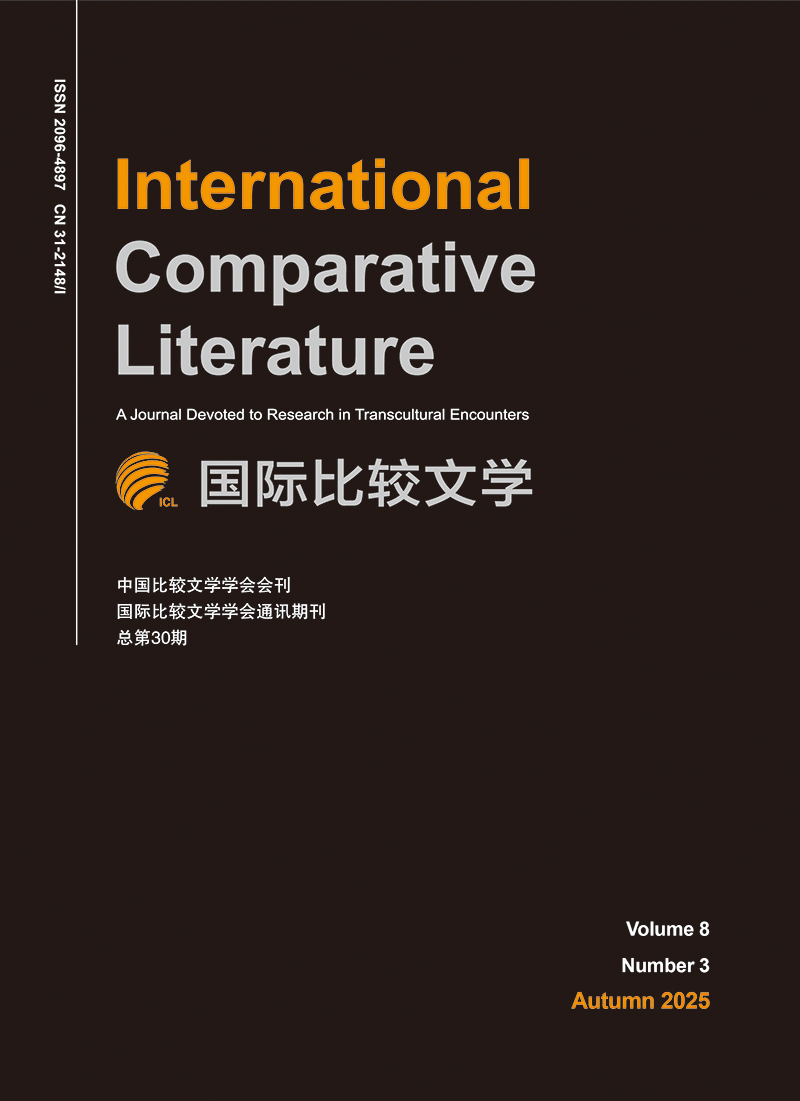|
[1]
|
Shaw, Ian.The Oxford History of Ancient Egypt.Oxford:Oxford University Press, 2002.
|
|
[2]
|
陈良运:《"〈易林〉几与〈三百篇〉并为四言诗矩彠"-钱钟书论〈易林〉述评》, 《周易研究》2002年第5期, 第64-71页。[CHEN Liangyun. "Yilin ji yu Sanbaipian bing wei siyanshi juhuo" (Yilin and the Book of Songs Are the Sources of Four Character Poems:Comments on Qian Zhongshu's Research).Zhouyi yanjiu(Studies of Zhouyi) 55, no.5 (Oct.2002):64-71.]
|
|
[3]
|
(清)黄宗羲:《易学象数论》, 北京:中华书局, 2010年。[HUANG Zongxi.Yixue xiangshu lun(Comments on the Image and Number of Yi-ology).Beijing:Zhong Hua Book Company, 2010.]
|
|
[4]
|
(日)柄谷行人:《日本现代文学的起源》, 赵京华译, 北京:生活·读书·新知三联书店, 1980年。[KARATANI, Kojin.Riben xiandai wenxue de qiyuan(The Origin of Modern Japanese Literature).Translated by ZHAO Jinghua.Beijng:SDX Joint Publishing Company, 1980.]
|
|
[5]
|
李川:《文化复兴语境下的 "侨易学" 现象》, 《江苏师范大学学报》2016年第4期, 第64-70页。[LI Chuan. "Wenhua fuxing yujing xia de ‘Qiaoyixue’ xianxiang" (On the Phenomenon of Qiao-Yi Theory in the Context of Cultural Renaissance).Jiangsu shifan daxue xuebao(Journal of Jiangsu Normal University) 42, no.4 (Aug.2016):64-70.]
|
|
[6]
|
(美)列奥·施特劳斯:《迫害与写作艺术》, 刘峰译, 北京:华夏出版出社, 2012年。[Leo Strauss.Pohai yu xiezuo yishu(Persecution and the Art of Writing).Translated by LIU Feng.Beijing:Huaxia Publishing House, 2012.]
|
|
[7]
|
楼宇烈:《周易注校释》, 北京:中华书局, 2012年。[LOU Yulie.Zhouyi zhu jiaoshi(The Proofreading and Explanation of Zhouyi Annotations).Beijing:Zhong Hua Book Company, 2012.]
|
|
[8]
|
(清)尚秉和:《周易尚氏学》, 北京:中华书局, 2016年。[SHANG Binghe.Zhouyi Shangshi xue(Shang's Yi-ology).Beijing:Zhong Hua Book Company, 2016.]
|
|
[9]
|
——:《焦氏易林注》, 北京:九州出版社, 2010年。[——.Jiaoshi yilin zhu(Annotations on Forest of Yi by Jiao Gong).Beijing:Jiuzhou Publishing House, 2010.]
|
|
[10]
|
王晖:《从甲骨金文与考古资料的比较看汉字起源时代-并论良渚文化组此类陶文与汉字的起源》, 《考古学报》, 2013年第3期, 第283-296页。[WANG Hui. "Cong jiagu jinwen yu kaogu ziliao de bijiao kan hanzi qiyuan shidai-bing lun Liangzhu wenhua zu ci lei taowen yu hanzi de qiyuan" (The Date of the Origination of the Chinese Characters Seen from the Comparison of the Oracle Bone and Bronze Inscription and the Archaeological Materials:Also on the World-Forming Pottery Marks of Liangzhu Culture and the Date of the Chinese Characters).Kaogu xuebao(Acta Archaeologica Sinica) 190, no.3(Jul.2013):283-96.]
|
|
[11]
|
(清)王筠:《文字蒙求》, 北京:中华书局, 1962年。[WANG Yun.Wenzi mengqiu(The Enlightenment of Chinese Characters).Beijing:Zhong Hua Book Company, 1962.]
|
|
[12]
|
徐传武、胡真:《易林汇校集注》, 北京:中华书局, 2012年。[XU Chuanwu, HU Zhen.Yilin huijiao jizhu(Proofreading and Annotation of Forest of Yi).Beijing:Zhong Hua Book Company, 2012.]
|
|
[13]
|
徐复、宋文民:《说文五百四十部首正解》, 南京:江苏古籍出版社, 2003年。[XU Fu, SONG Wenming.Shuowen wubaisishibu zhengjie(The Explanation of the 540 Radicals in Shuowen).Nanjing:Jiangsu Classics Publishing House, 2003.]
|
|
[14]
|
叶隽:《文学侨易学与 "观念侨易"-"文学与思想史" 研究的方法论思考》, 《中国比较文学》2017年第2期, 第15-25页。[YE Jun. "Wenxue Qiaoyixue yu ‘guannian Qiaoyi’ "(The Study of Literary Qiao-Yi and "the Idea of Qiao-Yi"-Methodological Thinking on the History of Literature and Thought).Zhongguo bijiaowenxue(Compara-tive Literature in China) 2(2017):15-25.]
|
|
[15]
|
——:《变创与渐常:侨易学的观念》, 北京:北京大学出版社, 2014年。[——.Bianchuang yu jianchang:Qiaoyixue de guannian(Drastic Change and Gradual Change:The Concept of Qiao-Yiology).Beijing:Beijing University Press, 2014.]
|
|
[16]
|
臧克和、王平:《说文解字新订》, 北京:中华书局, 2002年。[ZANG Kehe, WANG Ping.Shuowenjiezi xinding(A New Revision of Shuowen jiezi).Beijing:Zhong Hua Book Company, 2002.]
|
|
[17]
|
(宋)朱熹:《周易本义》, 北京:中华书局, 2009年。[ZHU Xi.Zhouyi benyi(The Original Meaning of Zhouyi).Beijing:Zhong Hua Book Company, 2009.]
|

 点击查看大图
点击查看大图



 下载:
下载:

